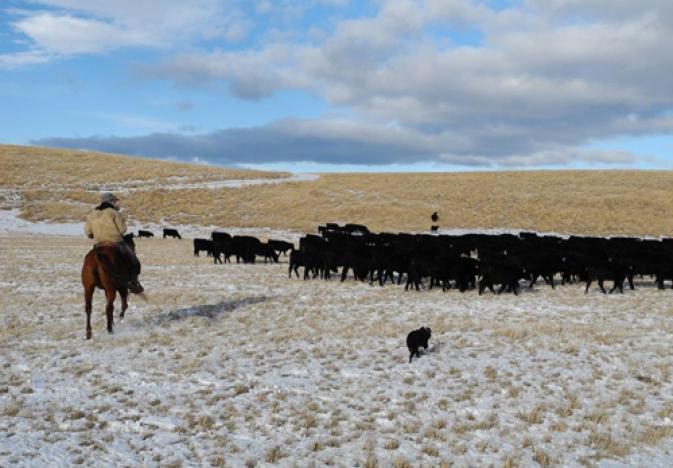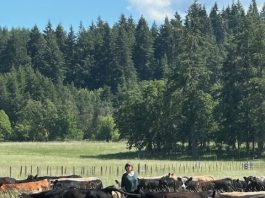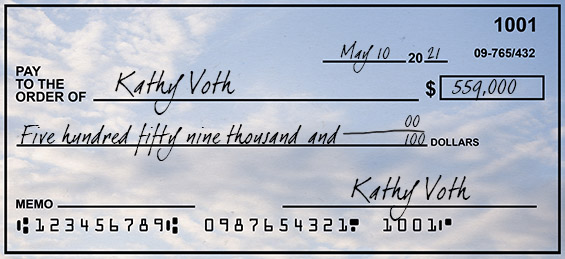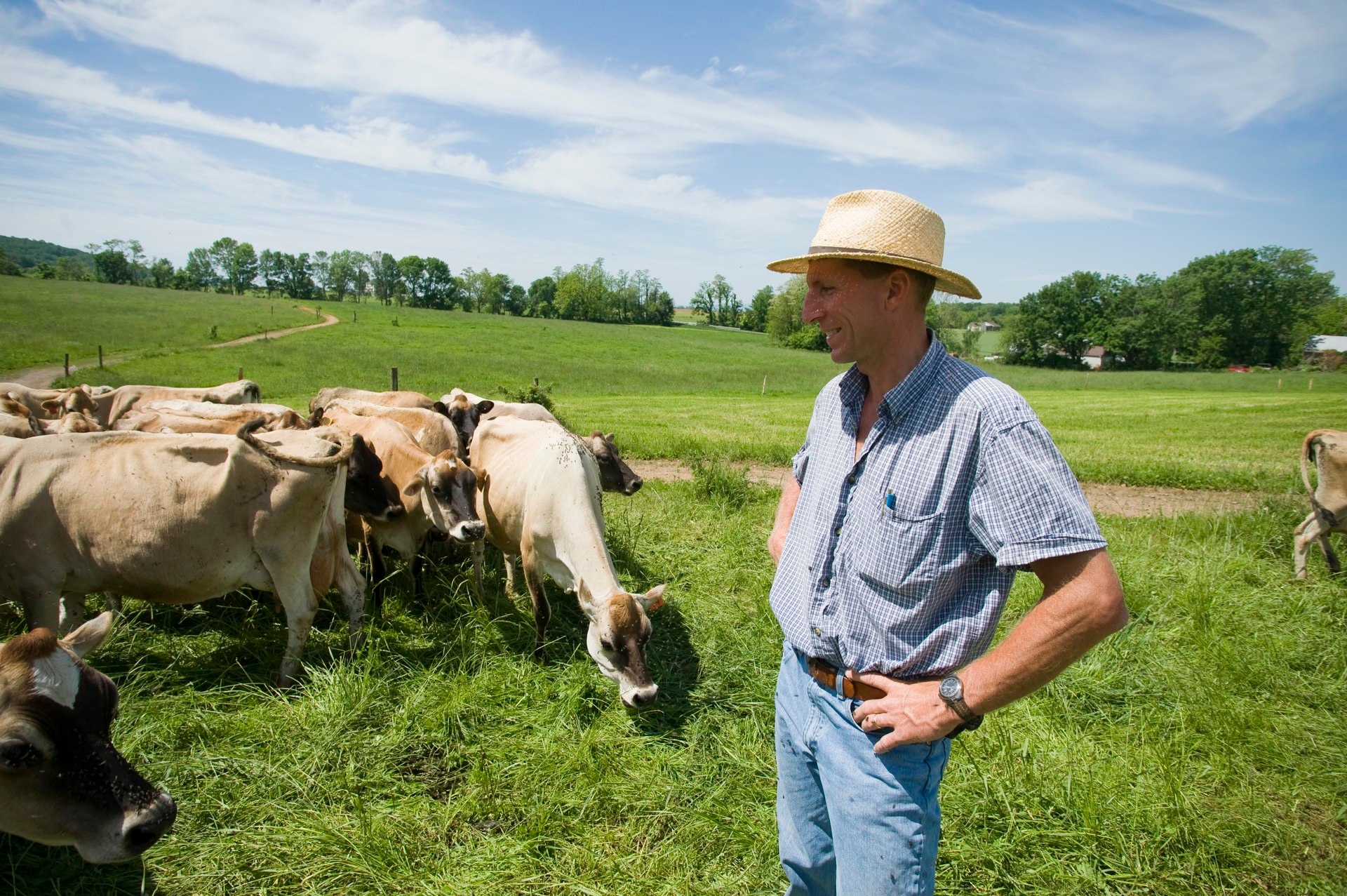For the past few years, Whit Hibbard has been sharing a series of articles on Low-Stress Livestock Handling (LSLH). We’ve gathered these articles as one of our Special Collections so you can see them all. Stay tuned as we’ll be sharing a number of new articles in upcoming issues of On Pasture.
Driving—the active process of initiating and maintaining movement in livestock—entails two vitally important, but generally under-appreciated and overlooked prerequisites, “approaching” and “starting.” In a prior article in this series I talked about approaching. In this article I will talk about starting.
Conventionally, how do people start cattle? They go right at them. They yell. They sic their dogs on them. They race around. They poke at one, then follow it for a few steps or give it an extra shove for good measure. Then they go do the same with another cow but the first one stops, so they have to go back and shove on it again. They do all these things – just like I did for 38 years – without realizing that there are negative consequences, like making our animals hard to drive, dull, and uncooperative.

We might ask, why do people start their animals like that? At least in my own case – and everyone else in our neck of the woods – I didn’t know that there was any other way. The common belief was that we would have to use fear and force to make our cattle go someplace they didn’t want to go.
But does that get the all important mind change that we’re striving for in low-stress livestock handling (LSLH) and create “good movement,” which is when cattle are willingly going where we want and at a pace that is comfortable for them? Or, are we merely coercing them into doing something that they are either not ready to do or don’t want to do, and thereby creating “bad movement,” which is when animals simply want to get away from us?
In LSLH we need to remember that we are working with our animals’ minds, not just their bodies. So think how much easier it would be to drive our cattle if we could make our idea their idea so they willing go where we want. To do so we need to approach properly—i.e., approaching with a straight-lined oblique angle until we intersect their pressure zone—then start our animals properly. According to Bud Williams, “The one thing that I absolutely do is start animals properly if I expect to get a good result. . . . If you take an hour to start ‘em properly it’ll save you hours later. How you start animals determines 99% of the outcomes.”
So, how should we start animals? There are several critical steps:

1. Zigzag within their pressure zone to apply enough pressure to stimulate movement, but giving the animal(s) time to decide to move away from the pressure; that way it’s their idea so they are content. If we force them off we’re likely to create bad movement that will make driving difficult.
2. Don’t start them too fast. According to Bud, “Most people start cattle too fast and they get too much movement to start.”
3. Once the animals do move, we should either let them take a few steps before following, or move on to pressure another animal(s), so they experience the all important release of pressure. What most people do is pressure an animal to move and then follow it—which is a forward-parallel movement that tends to slow or stop movement—or they give the animal an extra shove for “good measure,” which actually punishes it for doing the right thing.
If we start animals properly we’ve made our idea, which is to move, their idea, so things should go smoothly. If we start them improperly and get them upset, they will be hard to drive because their minds will be on resisting our pressure and going back to where they were last comfortable.
Starting Cows and Calves
Starting cows and calves—especially first-calf heifers and/or young calves—deserves special attention because this could well be the number one stock handling problem experienced by cow-calf producers (e.g., we’ve all had the experience of runbacks). According to Bud, “When you have trouble with cows and calves it’s almost always due to how you start ‘em,” but if we start them properly, cows will take their calves and trail out unless we do something to split them up. The biggest mistake people make is applying too much pressure so the cow’s mind is on the person and not her calf, and since she’s generally more sensitive to pressure than her calf, she’s likely to take off without it.
So, in addition to the critical steps listed above:

1. If cows and calves are not already together, get them mothered-up first before starting them. Do that by disturbing them just enough to get the cows and calves looking for each other. A cardinal rule is to not start anything that is unmothered.
2. Once they are mothered-up it’s especially important not to start them too soon or fast and trying to get too much movement. According to Bud, “If we get in too big a hurry to get ‘em started, we’ll end up fighting ‘em all the way. . . . If we hurry it will be slow due to problems we create.”
3. Start them by slowly zigzagging in so the cow has time to collect herself, take her calf and start going. Don’t force them to move off; rather, apply just enough pressure that she feels uncomfortable enough to want to move off. That way she’s made a mental decision to go so she’s happy; we haven’t forced her to go.
4. Stock are less stressed and more comfortable if they have more than one direction to go when pressured, so let them decide which direction to go (which isn’t to say that you can’t make one direction more “open” than another). A basic rule is good movement before direction.
It’s important to realize that it doesn’t take any longer to start them properly than starting them improperly and it will save a lot of time in the long run. Also, this whole process can be considerably abbreviated as the calves get older and more experienced.






Great article with good sound information on LSLH. Enjoyed it!
Comments are closed.